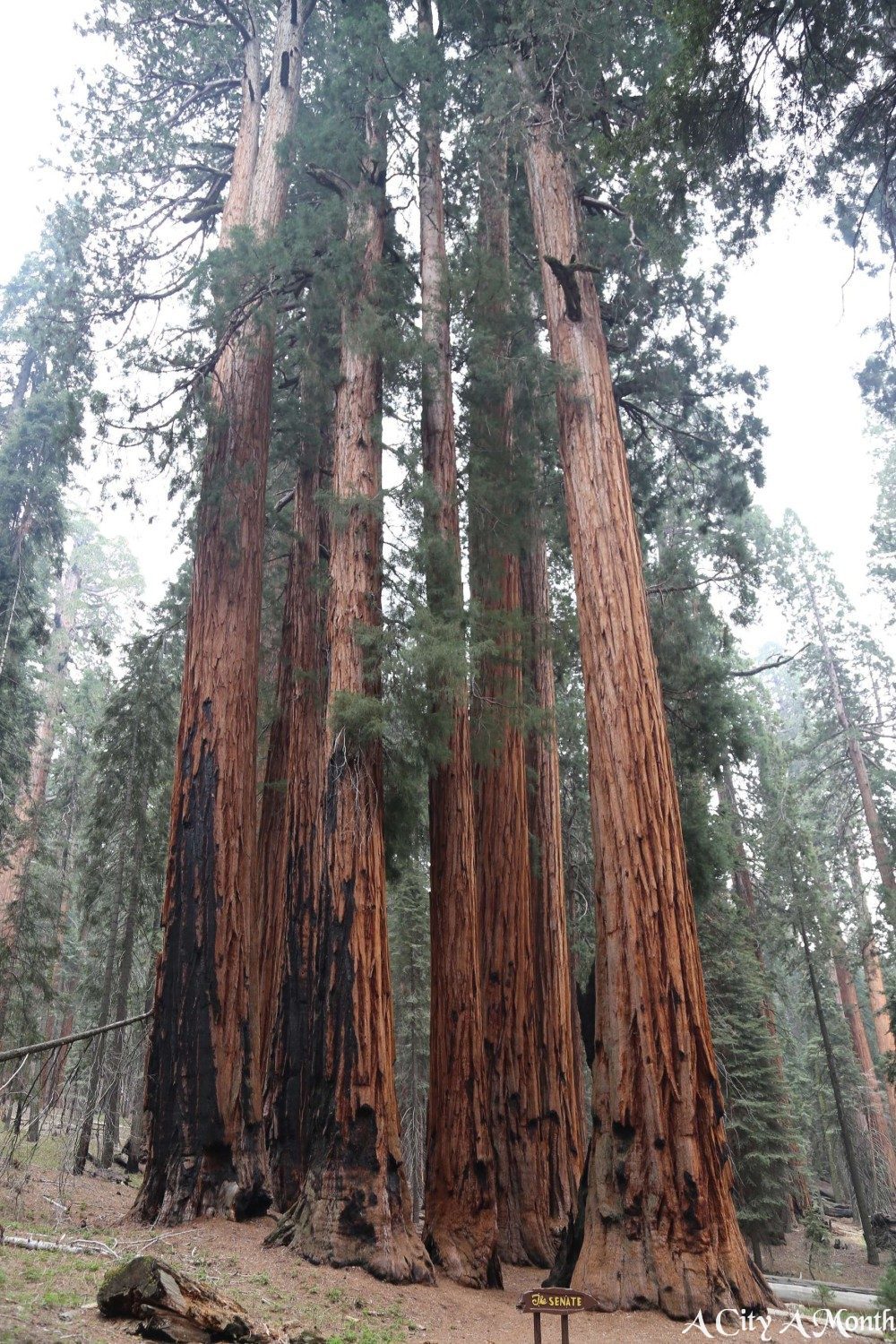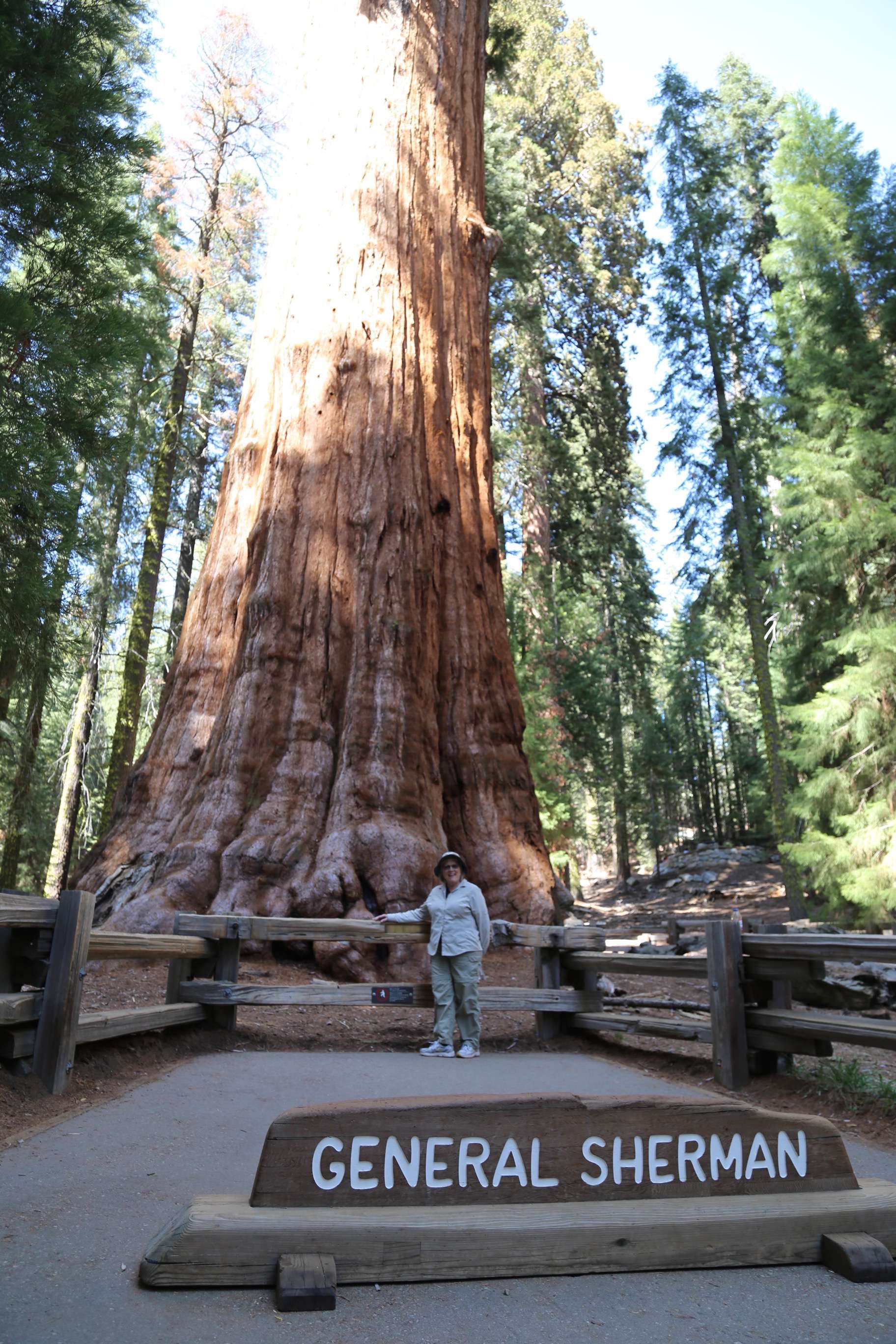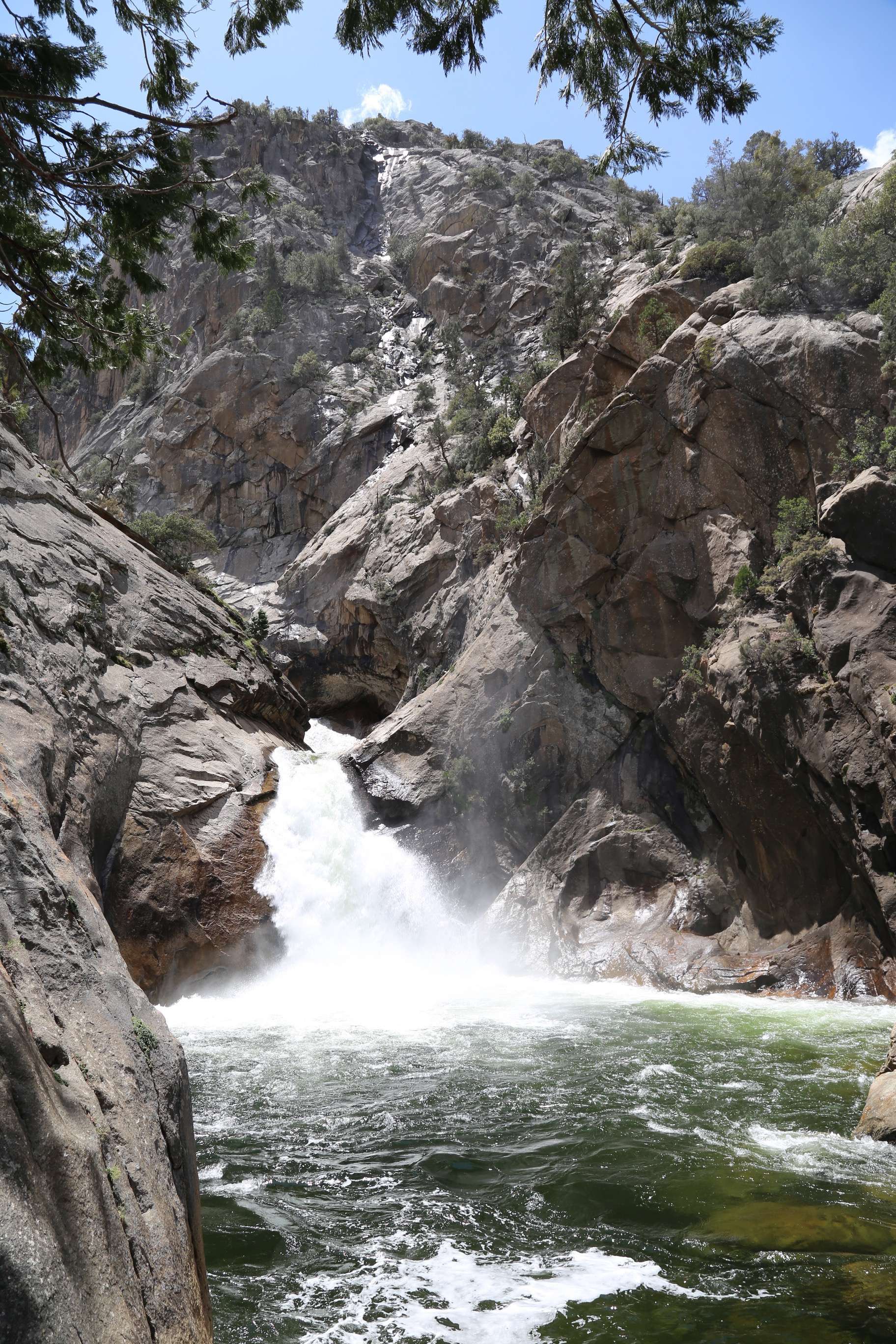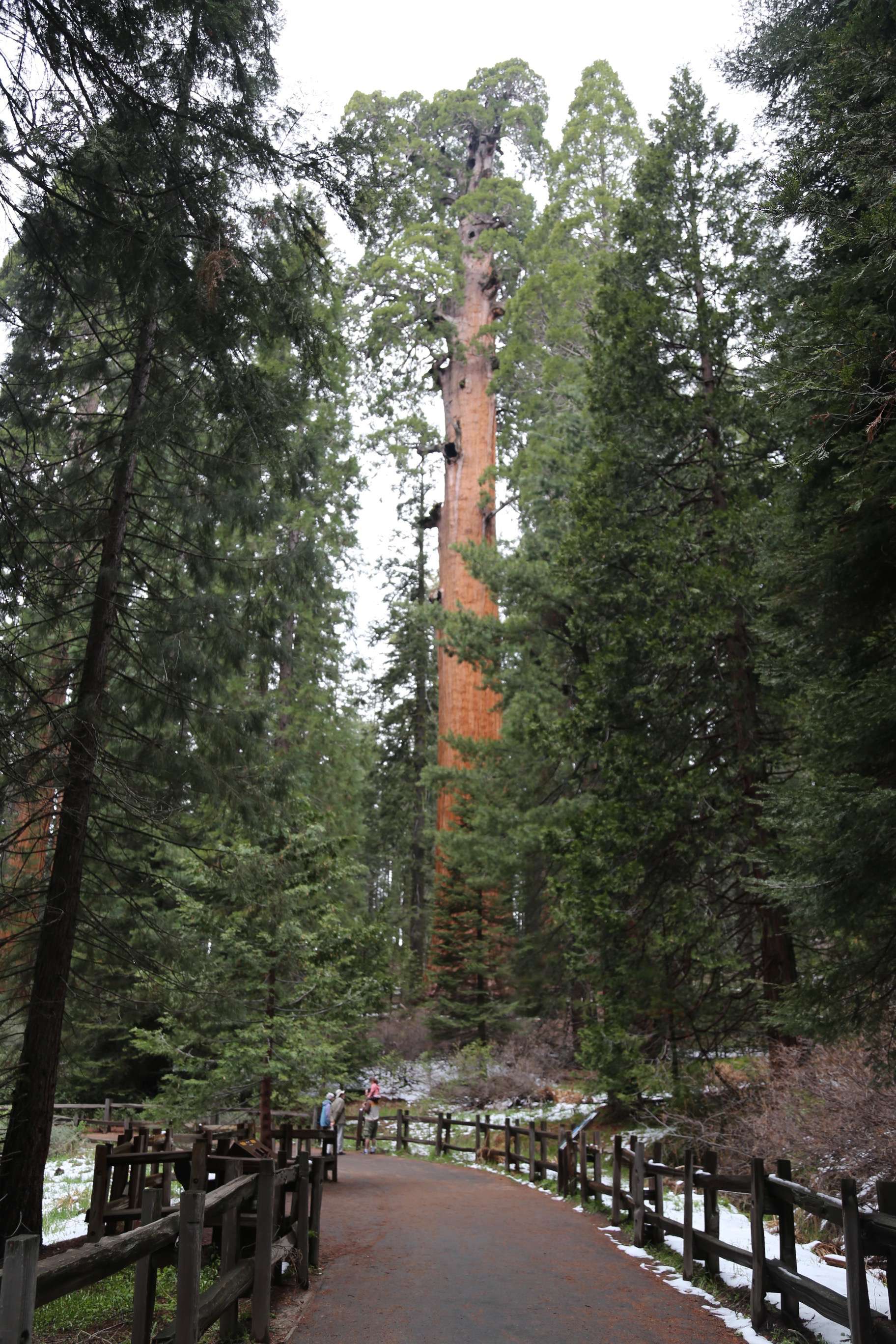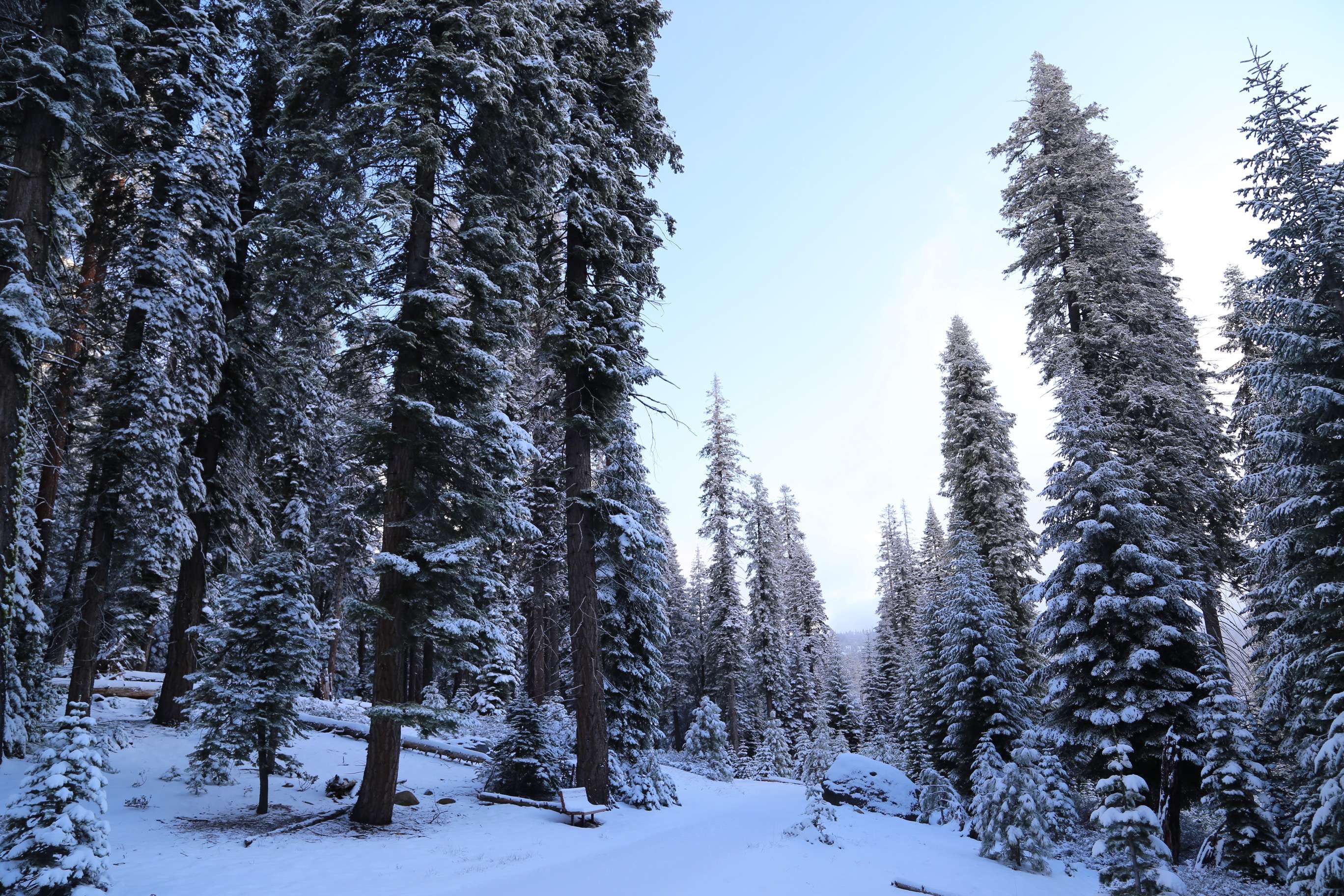The giant sequoia is the single largest tree on earth and in a world of monarchs the castle’s keep would be the twin wonders of Sequoia and Kings Canyon National Parks, the greatest gathering of the largest trees on the planet.
The grandest among them have been honored with the names of beloved American presidents, famous military generals and revered American Indian chieftains, including the Sequoia National Park namesake.
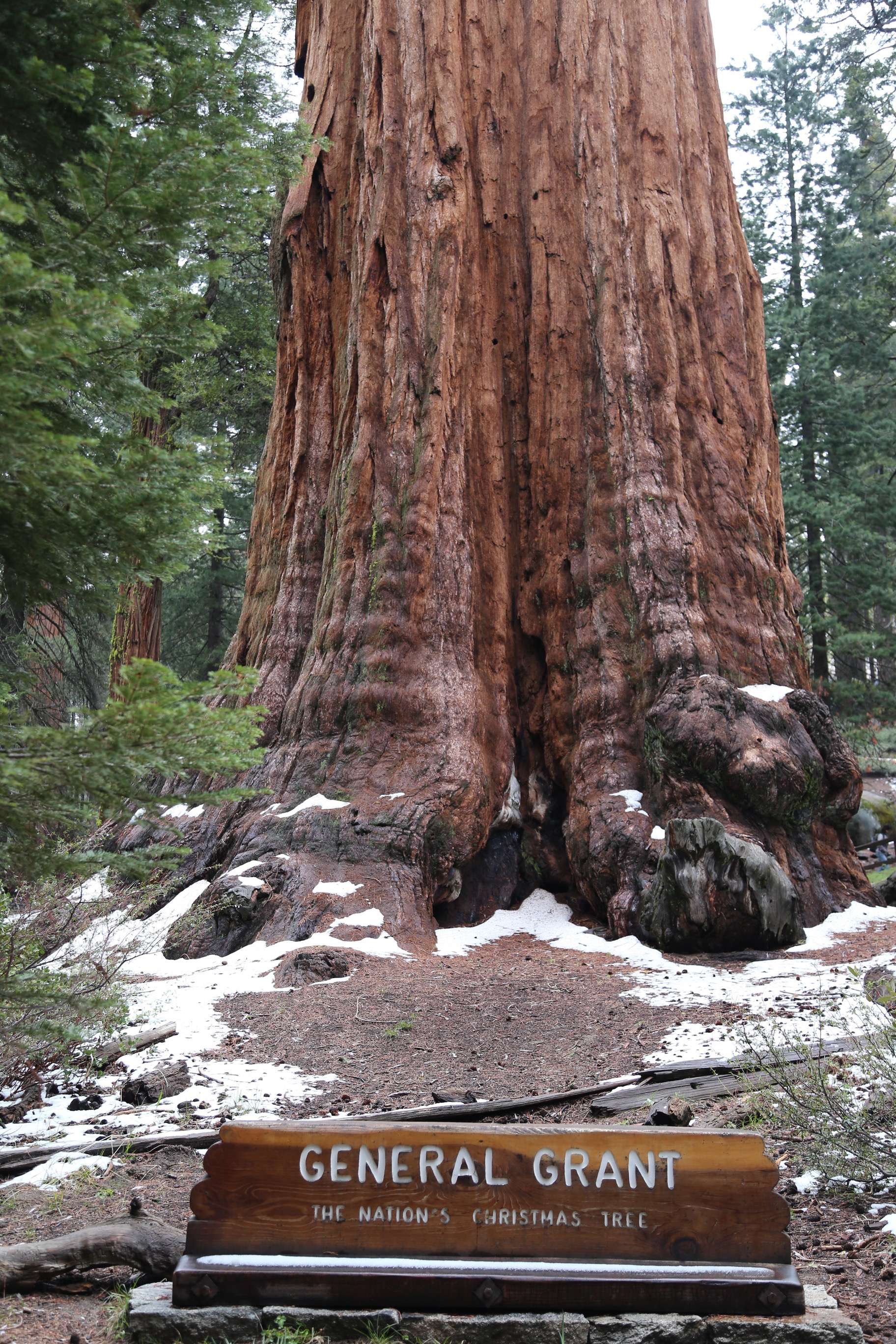
General Grant in Kings Canyon National Park is the largest giant sequoia there, and number two behind General Sherman.
To be clear, a close relative of the giant sequoia, the giant (or coast) redwood does grow taller, upwards of 378 feet, compared with a sequoia that topped out at 311 feet.
And a redwood’s girth is impressive in both its diameter, upwards of 27 feet (at chest height), and a lifespan of up to 2,000 years, but for a sequoia that’s just a good start as they can bulk up to 55 feet in diameter and live for 3,000 years.

With an elevation range of 4,600 feet to 6,600 feet, much of the moisture available to the giant sequoias comes from snow melt.
The giant sequoia’s bark can grow three feet thick. That much depth, in addition to having a soft spongy texture, protects the tree like a suit of armor as a variety of troubles try to bore, chew and gnaw their way in, infect a branch or part of the trunk, or attempt to burn it down in a scourge of fire.
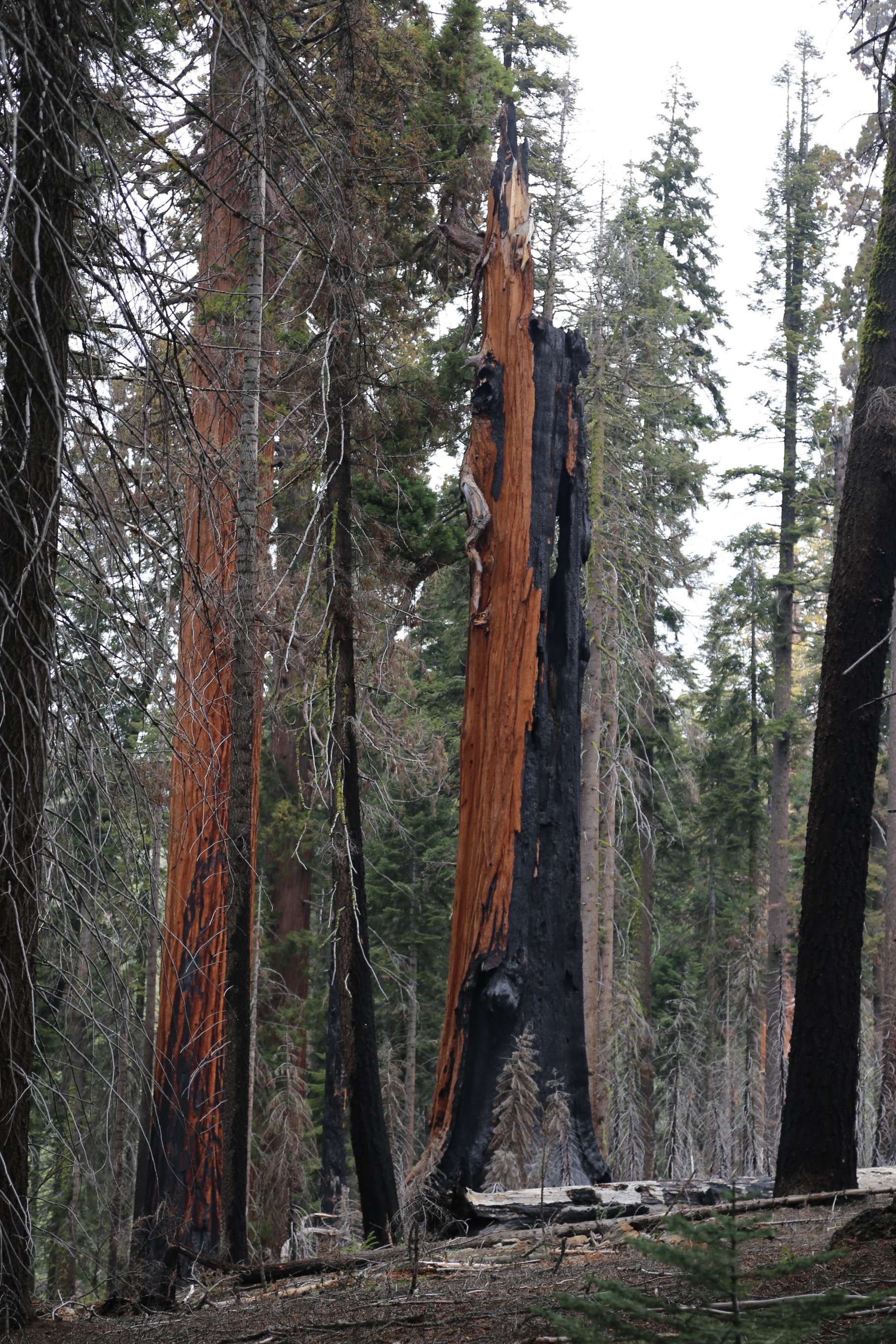
The tree in the middle won’t make it, but the one on the left will likely live on for many centuries, thanks in part to thick bark.
Park officials learned when they used controlled burns and allowed some fires to naturally work through, brush and deadfall is reduced, depriving fires of fuel. Many giant sequoias are scarred by fire and lightning strikes, but continue to grow.
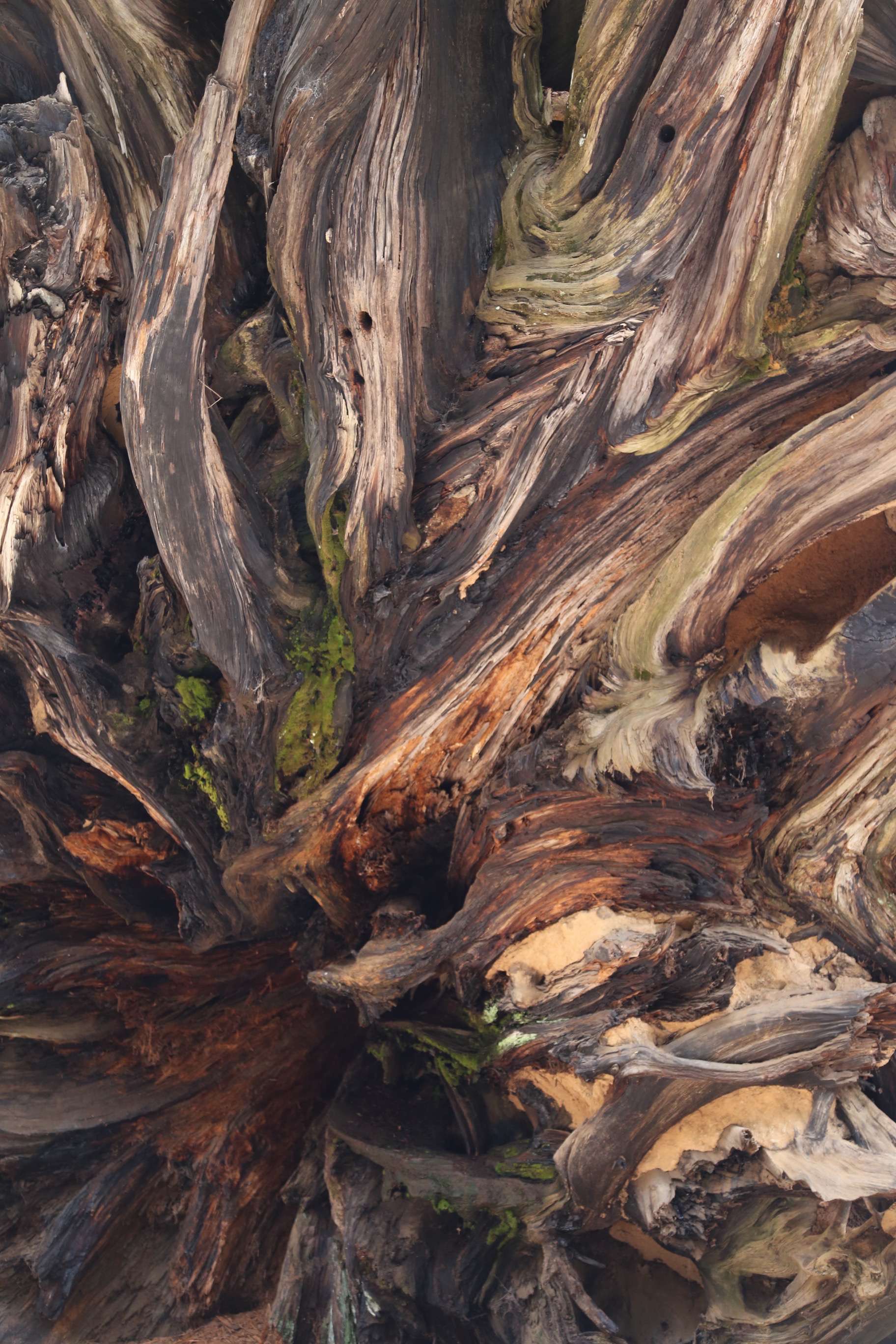
The Buttress Root at SNP, fell without warning on a clear day with no wind on June 3, 1959. Sequoias topple when shallow root systems are damaged.
Roots are shallow but grow wide and extend far beyond the trunk. Not for support, but to enable it to soak up as much moisture as possible, turning even a light rain into a good drink of water.
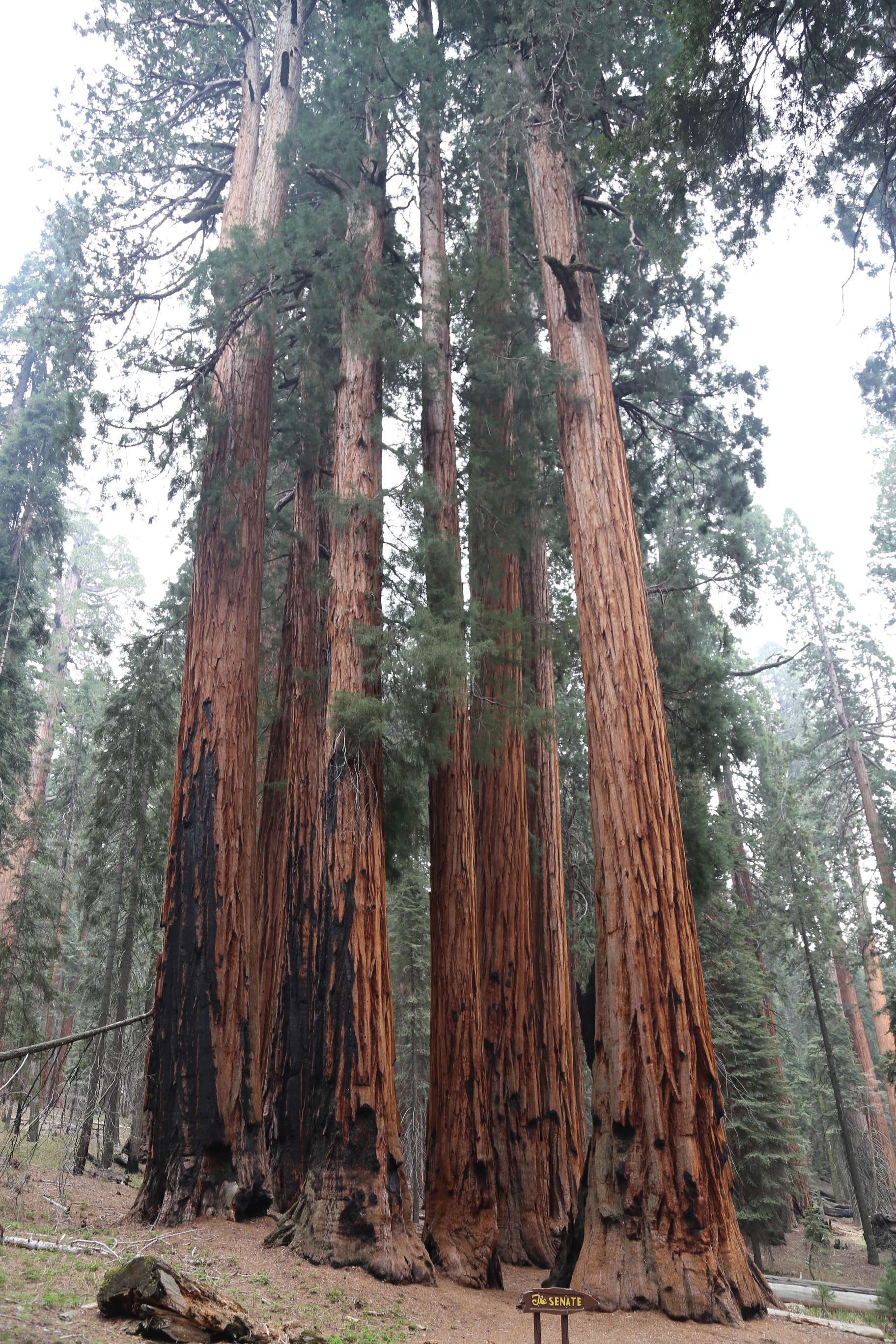
This magnificent grove in Sequoia NP is named The Senate, alluding perhaps to the pace at which the namesake moves?
Sequoias grow in groves, making their immensity and longevity all the more impressive. Of the 20 largest giant sequoias by trunk volume, 13 are found in Sequoia and Kings Canyon national parks, according to information updated in 2012 by the National Park Service.

Tharp’s Log, SNP, was used as a home and headquarters for the rancher who fashioned a 70′ home inside the fallen giant.

Gamlin built this cabin in KCNP and he was another settler trying to make a go of it in the fragile mountain country. Dreams were big but conditions were harsh.
Groves such as Giant Forest, Grant Grove and Garfield are laid out with pathways that allow visitors to easily navigate their way as they appreciate the giants. The paths are also designed so visitors don’t walk on the ground near the trunks, preserving the roots and reducing potential risk to the trees.
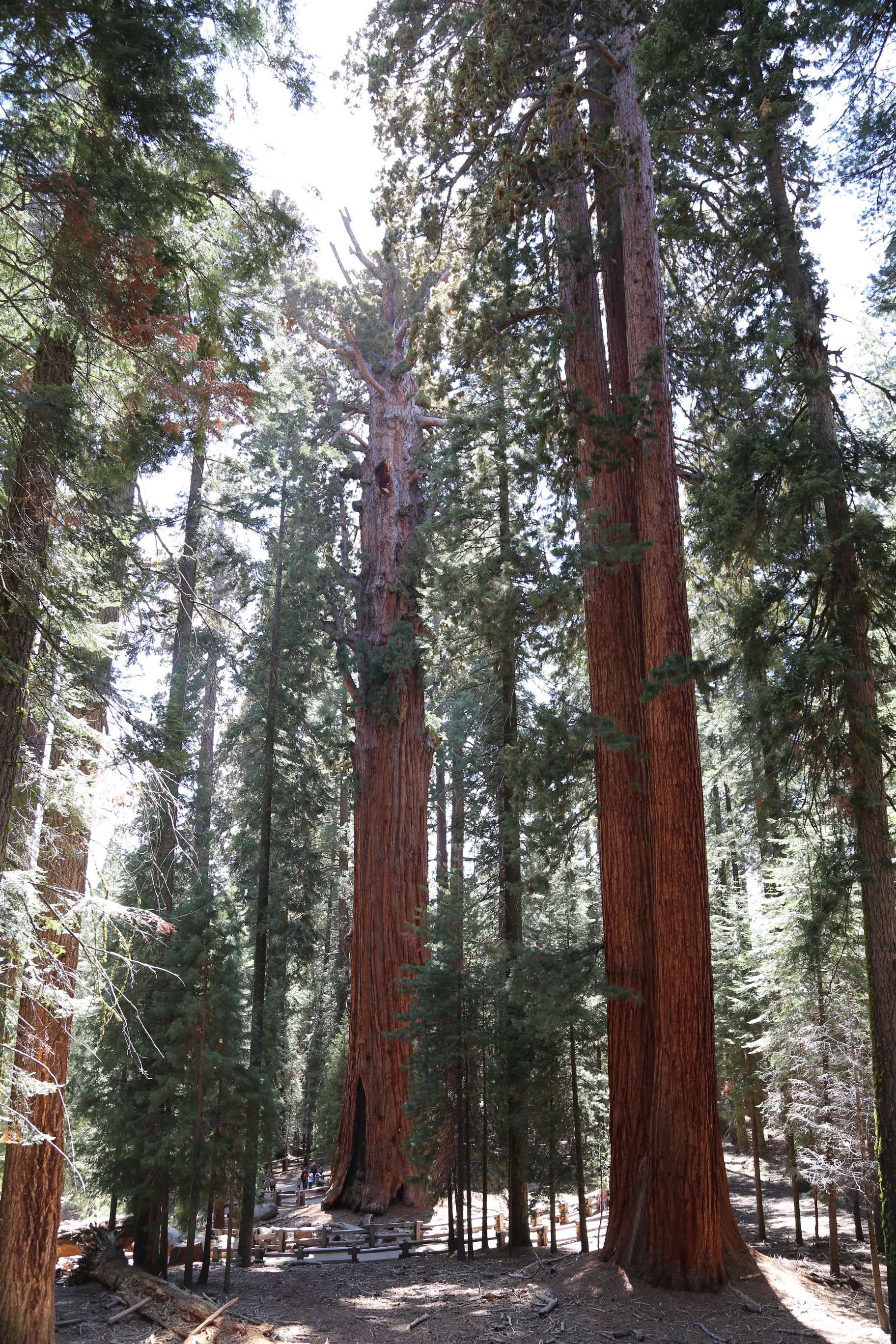
Pathways, this one at SNP, guide visitors through the groves and best viewing points without trampling to death the delicate roots sequoias need to survive.
In California, communing with nature at a national park often means contending with crowds. By size, well-known and highly popular Yosemite is slightly smaller than Sequoia and Kings Canyon (the two are operated as one), 747,956 acres versus 863,741 acres respectively, but the difference in visitor numbers is significant.
In 2014 Yosemite was packed with 3.882 million visitors, compared with only 1.039 million at Sequoia and a mere 502,268 who visited Kings Canyon, according to National Park Service figures.
Whether it’s a vacation in summer’s warm mountain air or the stillness of a wintertime snow, your time will be well spent, greatly enjoyed and long remembered as you behold the majesty of the biggest trees in the world.
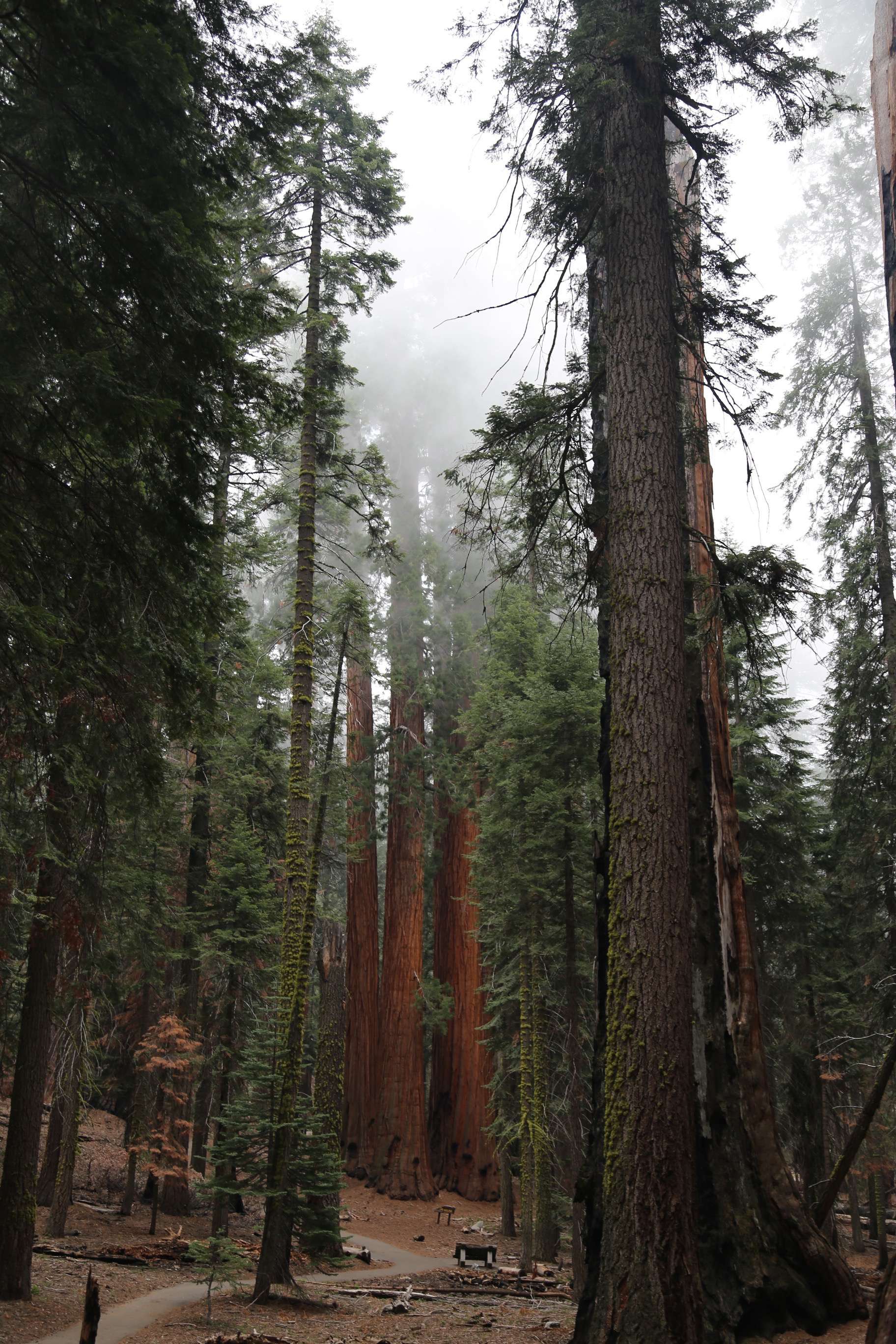
An afternoon mist rolls in, adding some measure to the cycle of rain and moisture that sustains the giant sequoias. This group at SNP has been named The House, after the other body in the U.S. Congress.
For more information about Sequoia and Kings Canyon National Parks, visit:
http://www.visitsequoia.com/lodging
http://www.visitsequoia.com/kings-canyon
